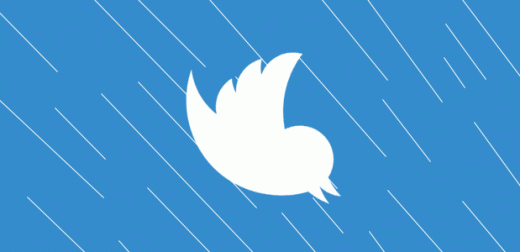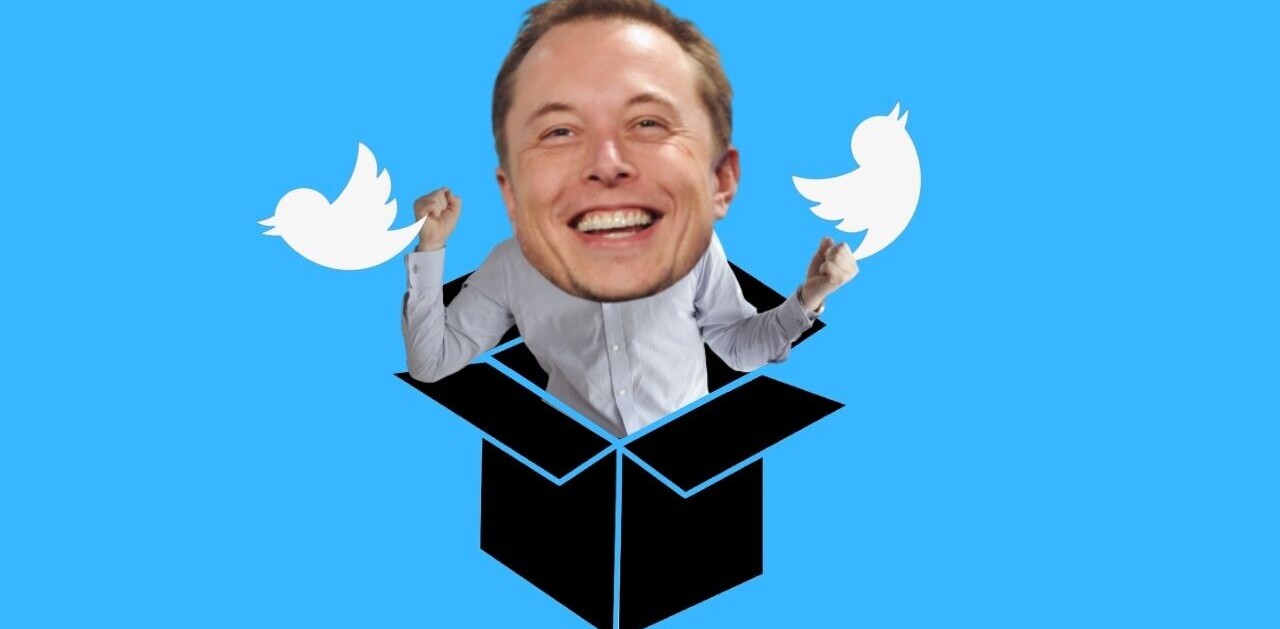
Before we get started, I’ll let you in on a secret. This guest post ends on a triumphant note, so don’t let the sobering beginnings get you down. I’m going to tell you a story, built on facts, scaffolded by speculation, and heavily painted with a rare color rarely seen on the Internet called logic.
Social media is broken for most of us. The myth of it being a democratic or meritocratic system isn’t holding up to scrutiny. We’re learning that it’s not the place to start thoughtful discussions, vet new ideas, or find complex solutions to niche problems. Don’t get me wrong, it’s a wondrous place for serendipitous snark between celebrities, world leaders, and the public, but the majority of us are spectators.
Based on randomly sampling data from Twitter in 2013, if you had 1K followers you were in the top 4 percent of active users. With 25K, you were in the top tenth of a percent. On top of that, a recent study by Network Insights concluded that nearly 10 percent of Twitter activity is spam.
If you’re thinking, “Egads, what’s all this mean?!” It means, most of us lack an audience to start intelligent conversations about niche topics. If you want to discuss astronomy, you need to build an audience of astronomers. And if you’re the new kid on the scene, it’s getting harder to build an engaged audience with content alone.
The simple fact is, social media brings every human on the planet together to compete for attention. Moms and mathematicians compete with multi-million dollar media entities. Although we can all publish, we aren’t promised that anyone is going to read or respond.
As we hear big media cry foul because their distribution allowance is cut by major platforms, we should realize that we’re all getting squeezed.
If you haven’t been following closely, the media and publishing world are up in arms as Facebook pressures them, yet again, to trust them with full-text of their content. Their feed algorithms are favoring auto-playing video over simpler text posts. The core reason is biological. We are visual creatures that are more easily lured by the movement of video. Suffice to say, it’s becoming harder for media outlets to break through the noise and gain a share of voice.
Twitter has Photos, Vine, Periscope and, they too, are testing auto-playing video in the feed. The likely outcome is Twitter’s timelines will continue to become more visual and we’ll see a decline in clickthrough rates without eye-catching motion graphics.
Before both of these platforms began favoring video, it was already clear that social channels were getting more difficult to gain a following, reach that audience, and have any meaningful engagement. Twitter CEO Dick Costolo conceded that tweeting doesn’t have value for most people when he proclaimed that it’s okay to not Tweet on Twitter.
What Dick should’ve said is, “You can’t compete so grab some popcorn and enjoy the show.”
The Canary in the Coal Mine
Ironically, I was late to the social media party because I was busy building products to make it simple for people to share their favorite content to their friends on all the new networks. I’ve learned the hard way that building an audience and starting conversations is difficult, especially if you’re not comfortable pandering to every person you meet.
At first, like many others, I shrugged and believed I wasn’t interesting enough. Platforms provided no data to know how my content was performing. As Twitter opened up analytics, my data told me a different story.
My engagement was relatively high when I compared it to my more social famous friends, but it’s a numbers game and I didn’t have a big enough number at the top of the funnel to help my content take-off. With the confirmation that the platforms weren’t designed to give every user a voice, I explored new products and trends to see what was happening in the market.
What I saw was that many intelligent, thoughtful people were moving their deeper discussion off social networks on to a new type of social platform. This movement became validation of the larger problem — the canary in the coal mine that social media wasn’t the panacea that many claimed.
Scientists wanted a voice so they created their own social networks on Academia.edu, FigShare, and ResearchGate. HackerNews was spun out of the open-sourcing of Reddit and became the home for many programmers and startup enthusiasts.
It also inspired several spin-offs like: DataTau for data scientists; DesignerNews; LibraryNews, yes, for Librarians; Outbounding.org for Travel enthusiasts; Inbound.org and GrowthHackers for Marketers; BetaList for launching products; Gadget Hunt; KickStarter and their fellow crowdfunding sites; Fundrise for Commercial Property Investment; TheDrop for sharing new electronic music; CMX for Community Managers, and more.
It’s overwhelming how many options there are. Hans Leijström heroically attempted to create a mindmap with over 600 online communities but seems to have given up nearly two years ago. Search “marketing” on LinkedIn and you’ll find 32K open groups and 36K members only groups. I could keep going, but parody studies demonstrate continuously ranting big numbers has a ‘wow factor’ that asymptotically approaches ‘who gives.’
Oh and by the way, don’t expect me to discuss Google+ after Chris Messina killed it last year.
We Serve at the pleasure of the algorithm
Audiences spend more and more time in walled-gardens and media companies’ silo-ed value is quickly diminishing. Brands that we grew up on like Newsweek and New York Times are no longer the best distribution vehicles.
Their writers, who used to be chained to the desk, are now providing a temporary audience by driving traffic from their followings from the mobile phone. Writers have realized this and are asserting their independence. Ezra Klein, Nate Silver, Kara Swisher, Lara Setrakian and countless others have left prominent media companies after their brands helped them build massive followings across the social web.
Lara Setrakian, the former Bloomberg TV middle-east correspondent, co-founded News Deeply which creates rich vertical news experiences focused on issues like Ebola or the Syrian Civil War. Similarly, Klein moved to Vox Media, Silver founded data-driven 538, and Swisher co-founded Re/code.
To my utter amazement, media companies and journalists continue to bolster the mediums that lead to the marginalization of their organizational influence and the commodification of news. Facebook and Twitter’s “divide and conquer” strategy gave power to writers and removes the need for the parent media company’s platform.
That said, it makes the writer a slave to the platforms. They now serve an algorithm rather than an editor. Time will tell who’s a better, more transparent, boss. Nevertheless, Facebook doesn’t miss an opportunity to remind the media that the power is with their “high-profile staff.”
Vox.com explains various approaches to news and publishing they believe helped them develop a highly-engaged Facebook audience, including…Leveraging high-profile staff, such as Editor-in-Chief Ezra Klein, who has 220K fans of his own and often drives a quarter of Vox.com’s daily Facebook referrals — Liz Heron, Facebook Strategic News Partnerships
[Note: emphasis added]
Banding together to earn a voice
It’s getting harder to win on social media. It requires more and more polished ideas with social proof to help it reach lift-off on social platforms. The only way for most of us to break through the noise will be to work together in a shared context. In communities, we can band together to take ideas, polish them, hone the message, create memorable memes, videos and collectively launch them in to the social web.
The conversations that move us forward will continue to migrate to niche communities and those communities will be responsible for broadcasting the most important and best narratives to the larger, more diverse, social media eco-system. Journalists will continue to act as translators and story tellers who report on the niche conversations and help the world understand their importance. They’ll build a reputation with communities by telling the stories of those within them.
Communities will be the breeding ground for fresh ideas. And sure, some will be bad, inappropriate or off-color — but that’s okay. Communities will decide what’s acceptable and what’s not and evolve.
For the past decade, the platforms have expected people to live and work within the context of building an owned audiences. “Vote for us” will be the new “follow me.” Whether the goal is to learn, teach, or build an audience we would be better served to be helpful to a community in a shared context.
Going forward, community media is the place where most of those who continue broadcasting social media will source content and find new stories. Communities provide a place for people to quickly discover new voices and find vetted ideas.
Over time, new relationships will be built that spill over to the social networking and, hopefully, physical world. Social media isn’t going anywhere, but as it continues to get harder and harder to win the channels, the social proof communities can provide will help niche communities work together to spread the messages they decide are important through the more mass-market feeds.
Find your community and help build it, because that is where the next generation is going when they realize that social media won’t afford them a voice.
Or, forget it. Just go back to Facebook and learn about the 7 things pandas can teach you about having a better sex life.
Read Next: 7 goal-setting strategies to help you achieve great things on social media
Get the TNW newsletter
Get the most important tech news in your inbox each week.









